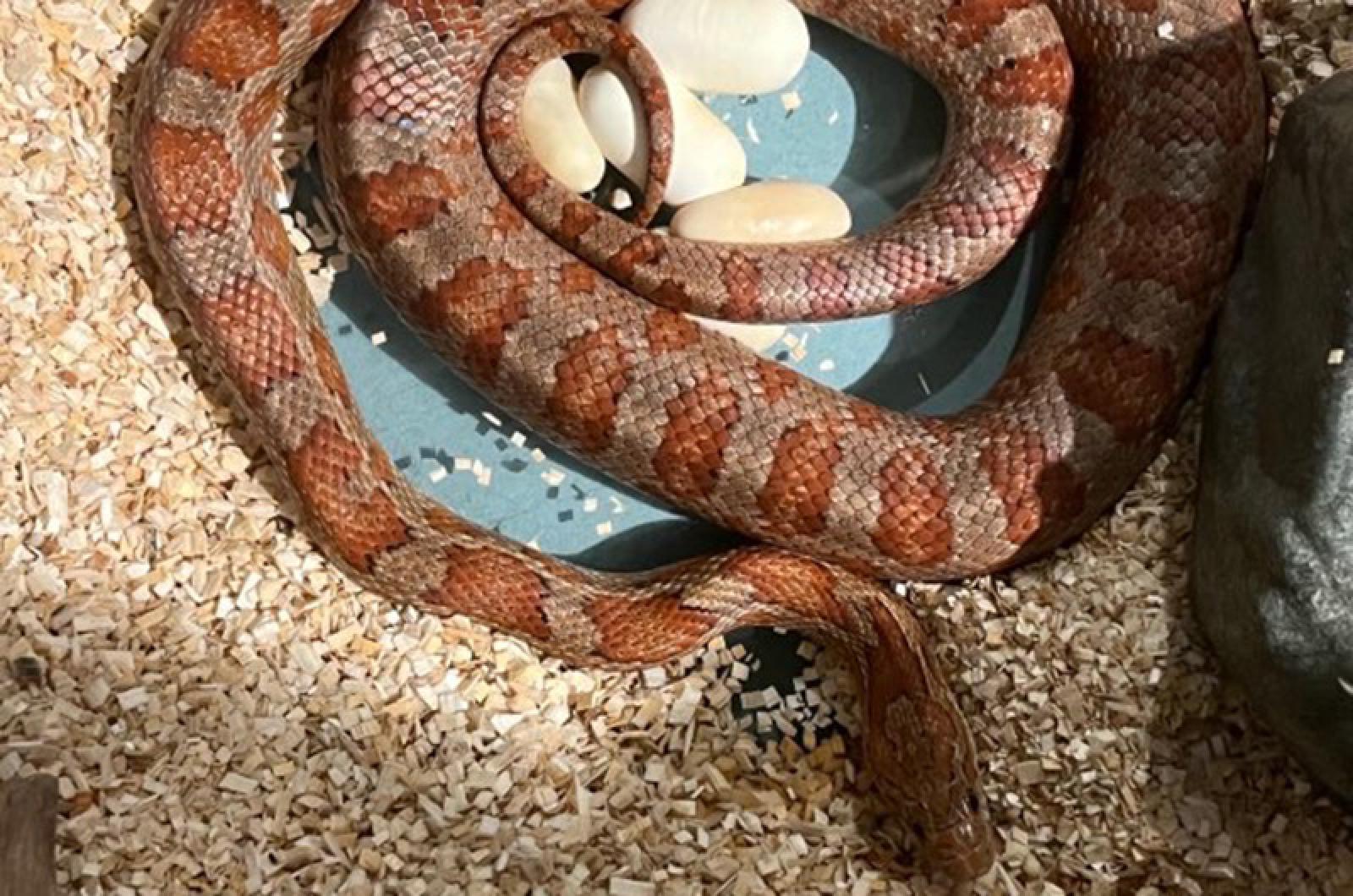It’s a girl!
The big reveal didn’t come with pink and blue fireworks, colored cake, or any other odd and awkward gender-reveal activities. Instead, she announced her gender in a most obvious way: by laying eggs. This was, however, still quite a surprise.
Mass Audubon’s Felix Neck Wildlife Sanctuary hosts a variety of animal ambassadors whose role is to teach people about the natural world, promote awareness, appreciation, active concern for our environment, and provide opportunities to learn about wildlife. One of our ambassadors is a corn snake, a relative of our native milk snake.
The most frequent question we receive from visitors concerns the sex of this snake; and until last week, our answer was that we didn’t know if it was a male or female as these reptiles have internal genitalia.
In general, male corn snakes have longer and thicker tails than females, though this visual identification method is often inconclusive and somewhat subjective. To be more certain, one must probe the snake’s cloaca. That invasive task was never undertaken for the wellbeing of the snake — as well as the staff.
The snake, though having been with us for more than six years, had never laid any eggs, so we were quite surprised when we arrived at the Nature Center to find that she was curled around an oval white egg. Over the course of the day, she laid four more, for a total of five eggs.
Having lived with us from her earliest days, we knew that she had never been with another snake, so we were surprised to see her attempting reproduction; usually it is mating that encourages egg laying. However, like chickens, snakes can lay unfertilized eggs and have eggs in their ovaries from birth.
Snakes have fascinating and variable reproductive habits. There are snakes that lay eggs (fertilized or unfertilized), birth live baby snakes, and others that do a combination of the two.
The corn snake is an oviparous, or egg-laying variety. Our native garter snake is viviparous and gives birth to live snakes. The third possibility are species such as rattlesnakes that have eggs that stay in their bodies until the young snakes emerge internally, and the mother snake births live snakes that came out of those internal eggs. This is called ovoviviparous.
Although it is unknown what caused our corn snake to lay eggs, this behavior is not unheard of. Female corn snakes can store sperm from an earlier encounter and they can also practice parthenogenesis. Parthenogenesis, or virgin birth, is possible, and female snakes that have never encountered a male can lay viable eggs. This happens in the wild when there is no access to male snakes, and live offspring can be produced even from this non-coupling. These types of births are not always 100 percent successful; the resultant offspring may not be healthy and might not survive for long.
We were extremely curious as to whether we had a parthenogenetic parent but, alas, the egg-laying ceased at five (though these snakes are capable of laying more than a dozen). The eggs began to brown, suggesting that they were indeed inviable.
Though this attempt was unsuccessful for the snake, it did provide us with the answer to the oft-asked question of her gender. We don’t know if she will lay eggs again. Perhaps once bitten, twice shy.
Suzan Bellincampi is islands director for Felix Neck Wildlife Sanctuary in Edgartown and the Nantucket Wildlife Sanctuaries. She is also the author of Martha’s Vineyard: A Field Guide to Island Nature and The Nature of Martha’s Vineyard.







Comments (1)
Comments
Comment policy »